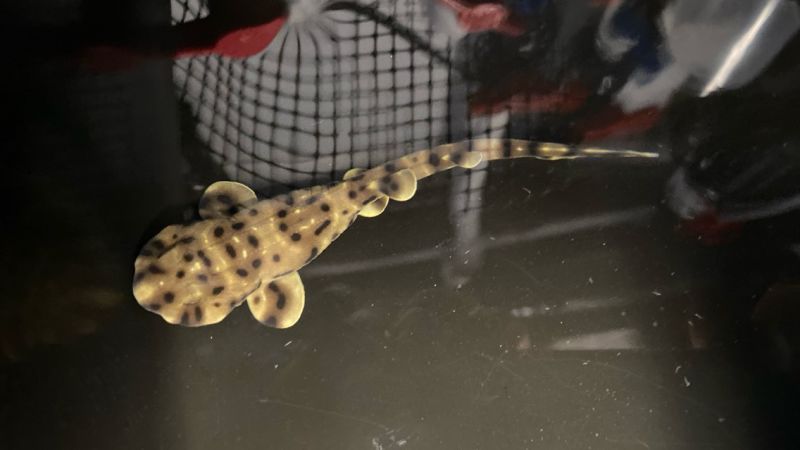The recent birth of a baby swell shark at the Shreveport Aquarium in Louisiana has generated significant excitement among researchers and marine enthusiasts alike. This extraordinary event has captured attention not merely due to the birth, but because of the mysterious circumstances surrounding it. Remarkably, the egg from which the shark pup, named Yoko, hatched came from a tank that contained only female sharks, with no male in sight for over three years. This anomaly raises intriguing questions about shark reproduction, particularly given the absence of typical mating activity.
Yoko made her debut in early January, much to the delight of the aquarium staff and visitors. The birth of this shark pup challenges conventional understanding of reproduction in marine animals, as both of the adult sharks present had been isolated from males for an extended period. This has led researchers to propose two possible explanations for this phenomenon. The first is parthenogenesis—a form of asexual reproduction where an embryo develops from an unfertilized egg. This process has been documented in several shark species, including zebra sharks and whitespotted bamboo sharks.
The second hypothesis involves the concept of delayed fertilization, which occurs when fertilization happens an extended period after mating. In complex marine environments, such as those inhabited by various shark species, delayed fertilization can be a way to maximize reproductive success amidst fluctuating environmental conditions. Regardless of the mechanism at play, Kevin Feldheim, who manages the Pritzker Laboratory for Molecular Systematics and Evolution, indicated that parthenogenesis has been observed before, not only in sharks but also in some rays.
Feldheim noted that female sharks might resort to parthenogenesis when they are isolated from males, although there are rare instances where females have been found to give birth via this method even in the presence of males. This aspect of reproductive biology remains poorly understood, with ongoing studies needed to uncover the triggers for parthenogenesis. He articulated the point that this method could represent a last-resort effort by females to ensure the continuation of their genetic legacy. Such adaptability in reproductive strategies further emphasizes how resilient and versatile sharks are in the face of various environmental challenges.
The mystery surrounding the birth of Yoko dovetails with ongoing scientific inquiries into the reproductive capabilities of sharks. With little data on how long females can retain sperm, some astonishing discoveries have been made. For instance, one female shark was documented to have held onto viable sperm for more than 45 months, showcasing the incredible biological capability of these creatures. Given these insights, the Shreveport Aquarium plans to conduct genetic testing on Yoko once she is sufficiently mature, which will help clarify the precise mechanism responsible for her birth.
Aquarium curator Greg Barrick expressed his enthusiasm for the situation, describing it as “incredible” and a testament to the species’ resilience. As the aquarium awaits confirmation of whether parthenogenesis or delayed fertilization was responsible for Yoko’s birth, the excitement surrounding the young shark not only highlights an extraordinary event in marine biology but also reinforces a broader understanding of life’s adaptability in nature. Barrick’s closing sentiment reflects the awe that many share regarding the mystery and the wonder inherent in natural processes: “It really proves that life… finds a way.”
In conclusion, the birth of Yoko serves as a fascinating case study that invites further exploration into the mechanisms of reproduction in sharks, prompting researchers to reconsider what is known about marine life and its complexities. As studies proceed to uncover the biological intricacies at play, the case of Yoko stands as a key example of nature’s unexpected capabilities.



